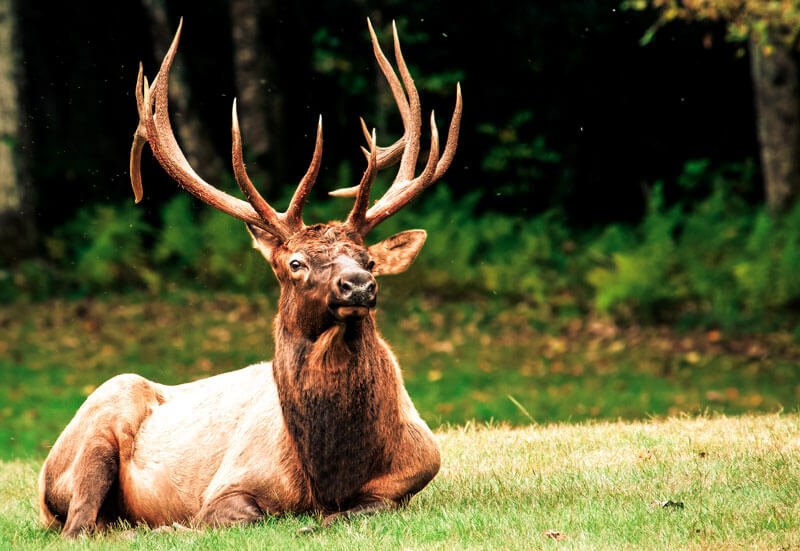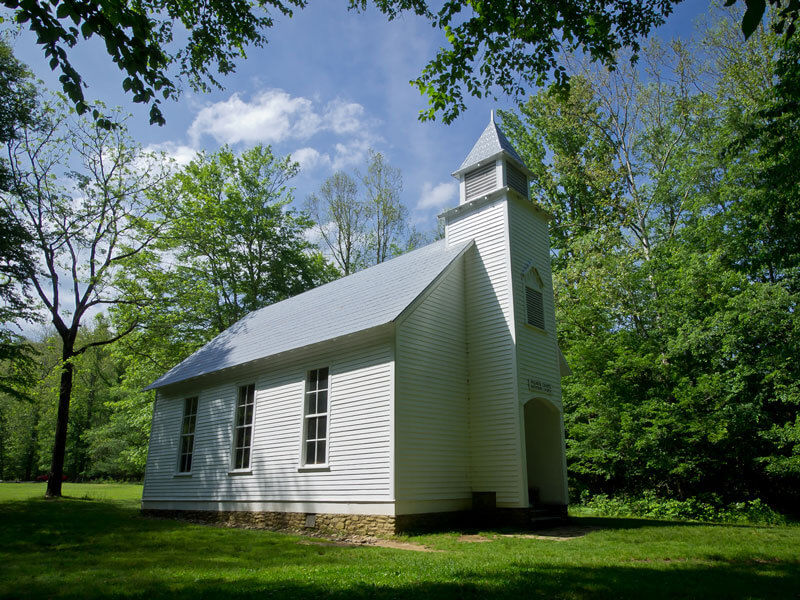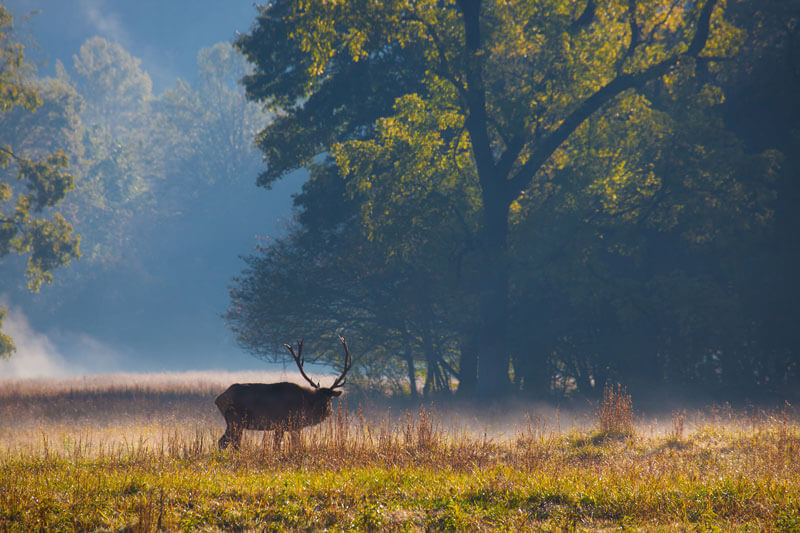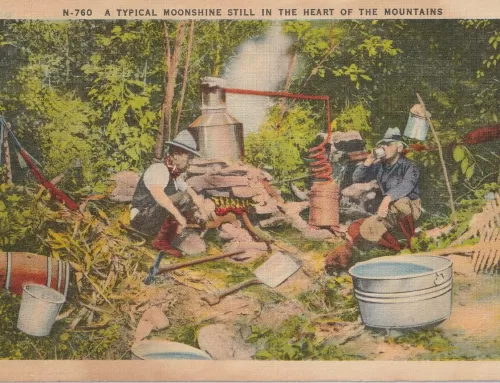Nestled in a picturesque valley and surrounded by some of the most rugged mountains in the entire southeastern United States, Cataloochee Valley is a true hidden gem. It is steeped in rich history, from its use as a Cherokee hunting ground to becoming an 1800s homestead to the majestic wild elk herd that roams the land today. This wild and charming area holds some of the greatest outdoor adventures inside the Great Smoky Mountains National Park.
Learn about the history of a self-sustaining Appalachian community, explore breathtaking views on hiking trails, catch a big one in one of many excellent fishing spots, marvel at the splendor of the valley’s wildlife, and enjoy the fresh air at your cozy campsite under the stars. Escape the crowds and find your little slice of heaven on a one-of-a-kind Smoky Mountain vacation in the Cataloochee Valley!
Things to do in the Cataloochee Valley
Elk Viewing

One of the most awe-inspiring activities in Cataloochee Valley is watching the area’s exquisite elk herd as it roams and grazes in the wild.
Several centuries ago, elk were commonplace in this peaceful mountain valley, but they were eliminated due to over-hunting and loss of habitat. It is believed that the last elk in North Carolina was killed in the late 1700s. Thankfully, a group of people from multiple organizations came together with the goal of returning the elk to the Smoky Mountains where they had once roamed so freely. In 2001, 52 elk were reintroduced to the Cataloochee Valley, and now the herd has grown to approximately 200.
Early mornings and late evenings are the best times for elk watching. Summer is an ideal time to see calves, and September and October are great for the rut (mating season) when bulls gather the cows into larger herds. Just remember that it is illegal to knowingly come within 50 yards of an elk. So, keep your distance and enjoy these stunning animals responsibly from a respectful distance with binoculars.
Historic Buildings

Before this land became part of the Great Smoky Mountains National Park, Cataloochee Valley was home to a self-sustaining Appalachian community who farmed the land. Nine buildings still stand, telling the stories of these homesteaders and paying homage to their way of life. You can tour a schoolhouse, a barn, churches, and several homes. Five of the historic buildings sit proudly along the road through the valley, and you can take an invigorating hike down the nearby Little Cataloochee Trail to find the other four. Pick up a Self-guiding Auto Tour booklet from various locations along the way as well as from the Haywood County Visitor’s Center in Maggie Valley. You can also find historical information and exhibits available seasonally at the Palmer House.
Bonus tip: The front porch of the Caldwell House built in 1909 is the perfect spot for a picnic lunch. You can find it near the end of the road past Palmer Chapel and Beech Cove School.
Hiking

A quick trip through the Cataloochee Valley reveals several hiking trails that boast scenic mountain views and breathtaking sights of this peaceful valley.
The Little Cataloochee Trail takes you on a thrilling six-mile one-way hike with plenty of uphill sections that will get your blood pumping. You’ll pass by historic buildings like the Little Cataloochee Baptist Church along the way. Start at the campsite near the Beech Grove School and hike the Pretty Hollow Gap to get to the main trail.
For an easier and faster hike, you can walk the Rough Fork Trail that crosses log foot bridges as it follows along a soothing stream to the Woody House. It’s an easy two-mile round-rip hike, or if you want to keep going, you can add on 5.5 miles to your hike and head up to Polls Gap. The Boogerman Trail, a seven-mile loop that takes you through groves of old-growth forest, is another popular hike.
Fishing

Cataloochee Valley is an angler’s dream with creeks that have been fished by the Cherokee and settlers since the very beginning. Whether you’re fly fishing or using a regular rod and reel, these gorgeous streams are known for the large populations of wild trout. Brook trout, brown trout, and rainbow trout are some of the most common catches.
You’ll need a North Carolina or Tennessee fishing license to fish anywhere inside the Great Smoky Mountains National Park. You can purchase one in any of the Cataloochee Valley towns or online from the state authorities.
Camping

What’s better than sleeping under the stars and waking up to birdsong and fresh air? Cataloochee Valley has one of the nicest campgrounds in the entire park. This primitive and well-maintained creekside spot boasts 27 campsites and is located very close to the main elk viewing area in the Valley, making it the perfect launching point for all your outdoor adventures. The campground is open mid-March to October for tents or RVs up to 31 feet. Reservations are required. You can reserve your spot online at https://www.recreation.gov/ or call toll-free at 1-877-444-6777.
Horseback Riding

Take your camping trip to the next level at the Cataloochee Horse Camp. You’ll find some of the most popular horseback riding trails in the Great Smoky Mountains Park. Enjoy the hypnotic trance of your horse’s ears, bobbing rhythmically in front of you as you stride down the sun-dappled trail. Discover the exhilarating combination of a grand adventure and soothing relaxation as you soak up the gorgeous mountain views and explore the delights of the Cataloochee Valley atop your trusty steed.
How to Get to Cataloochee Valley
To get to the Cataloochee Valley from I-40, take North Carolina Exit 20, and travel 0.2 miles to Cove Creek Road. Take a right on Cove Creek Road and then travel 11 miles, following the signs and directions into Cataloochee Valley. The road surface is rough, and there are quite a few hairpin turns. Depending on traffic and road conditions, the trip may take you 45 minutes to an hour.
Visit the Gateway to the Smokies podcast to hear about more of the breathtaking adventures that await in Cataloochee Valley!




